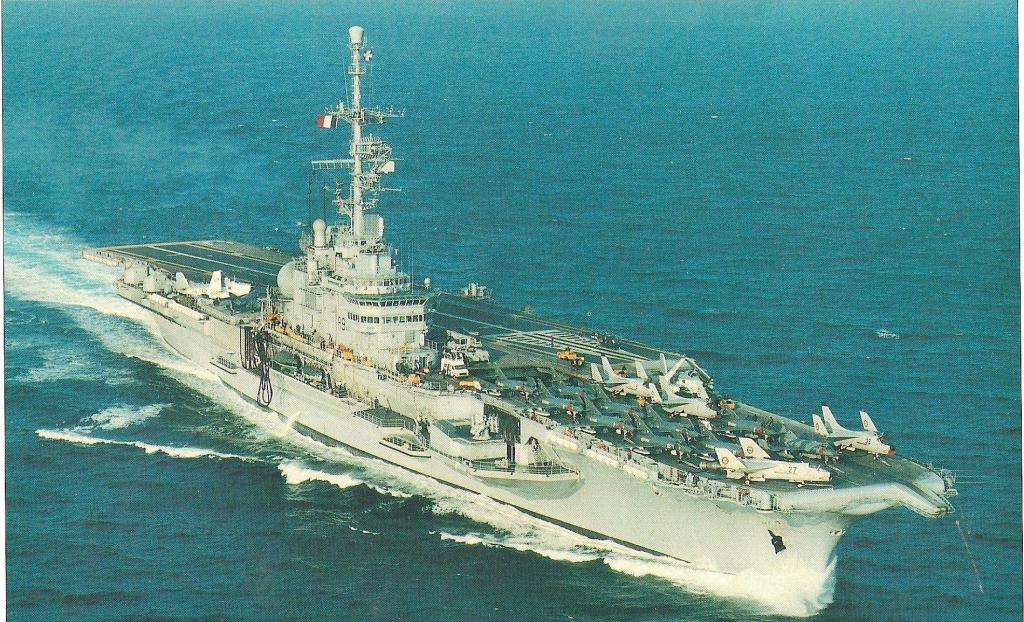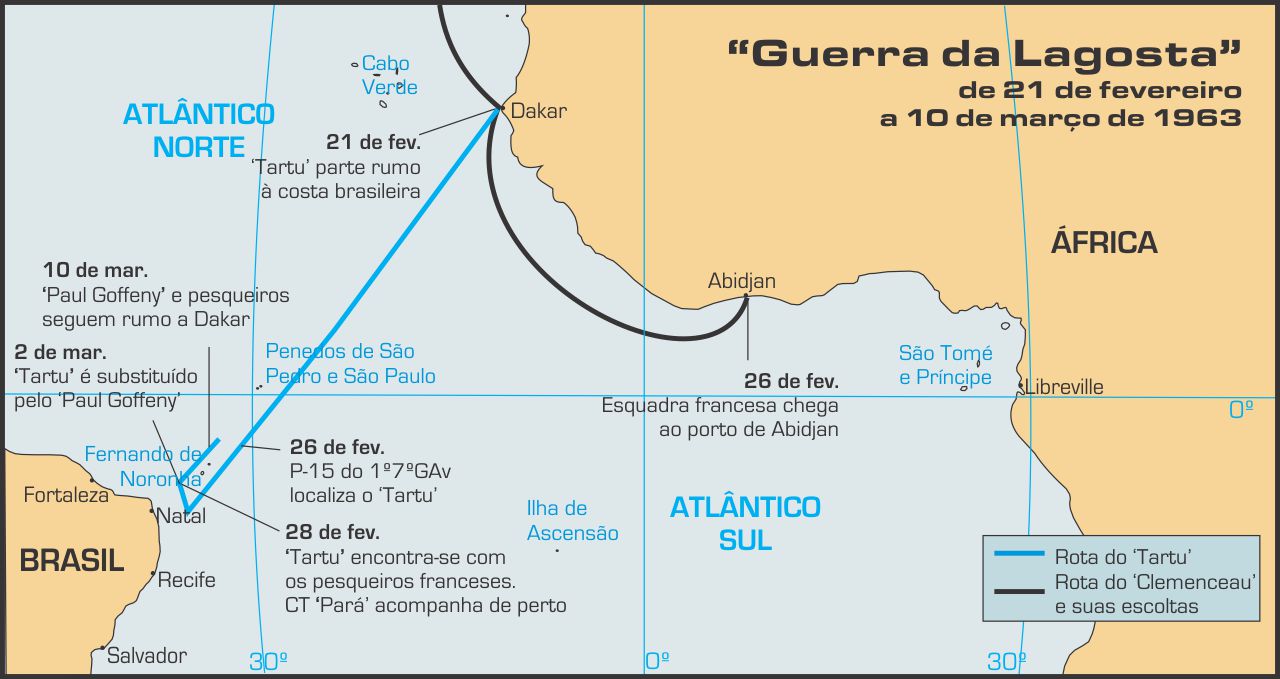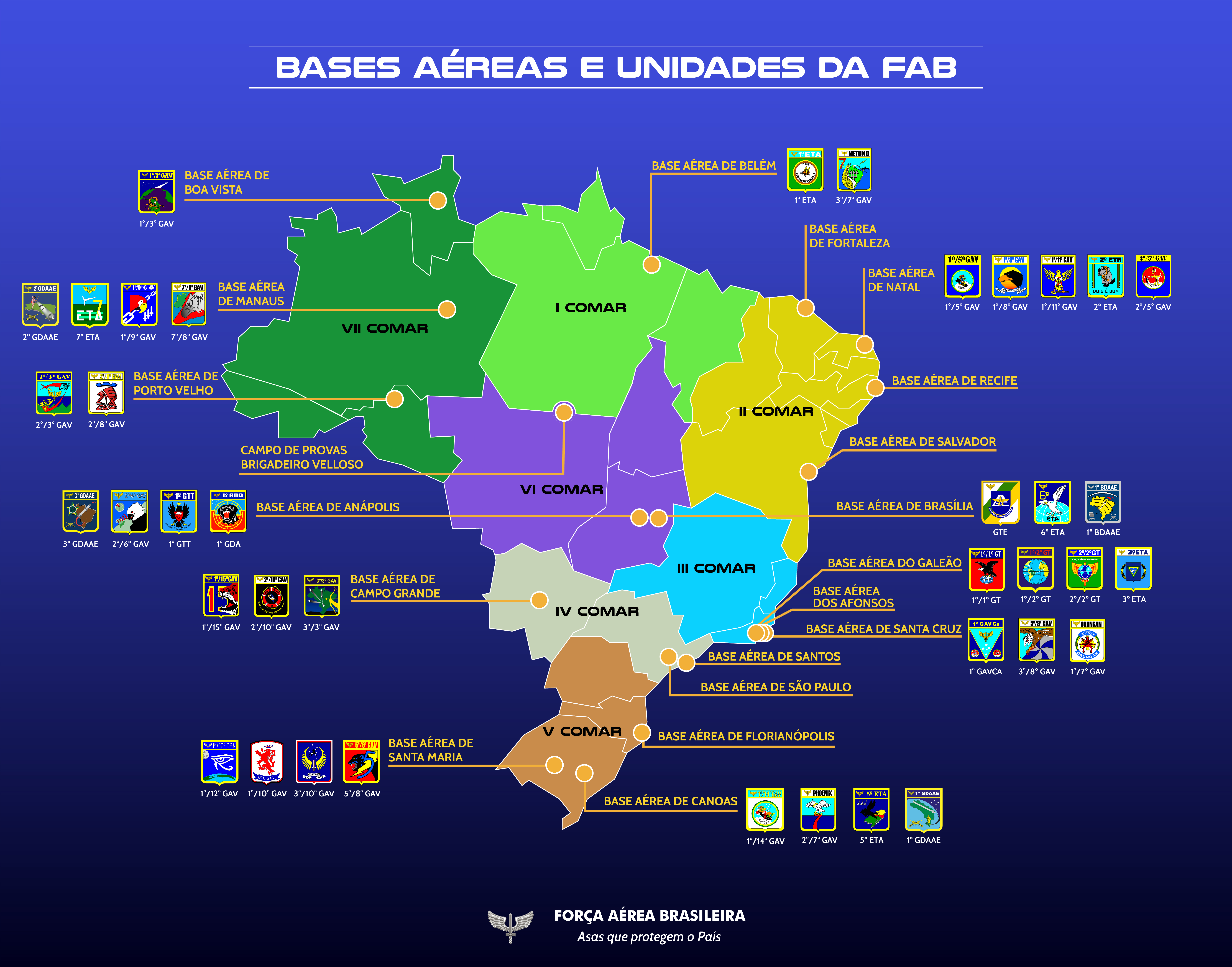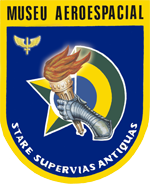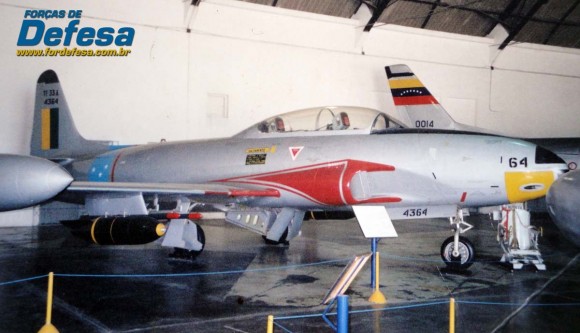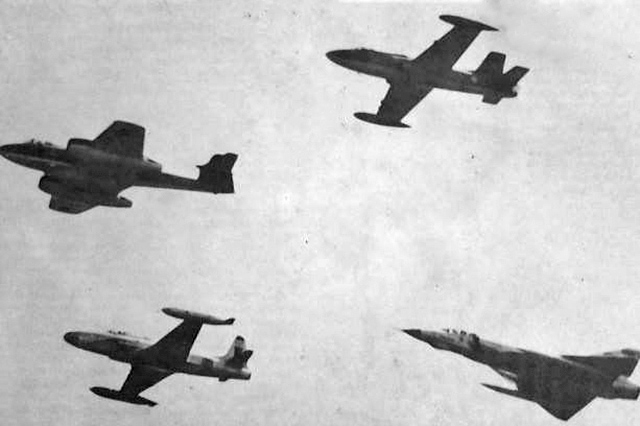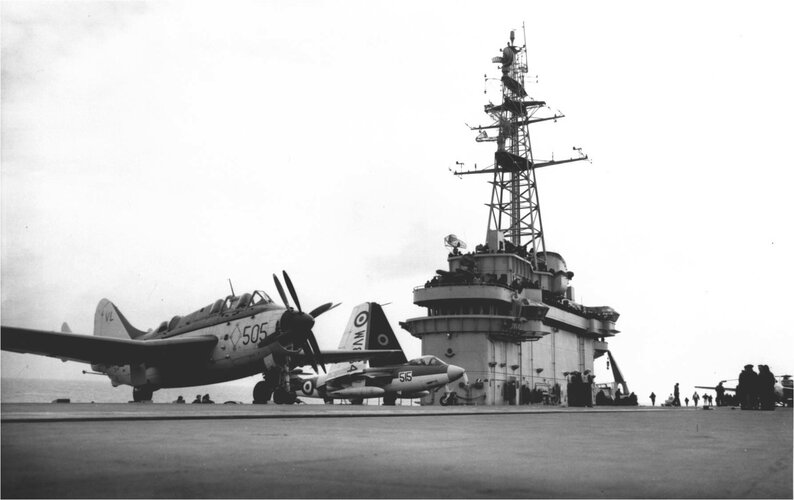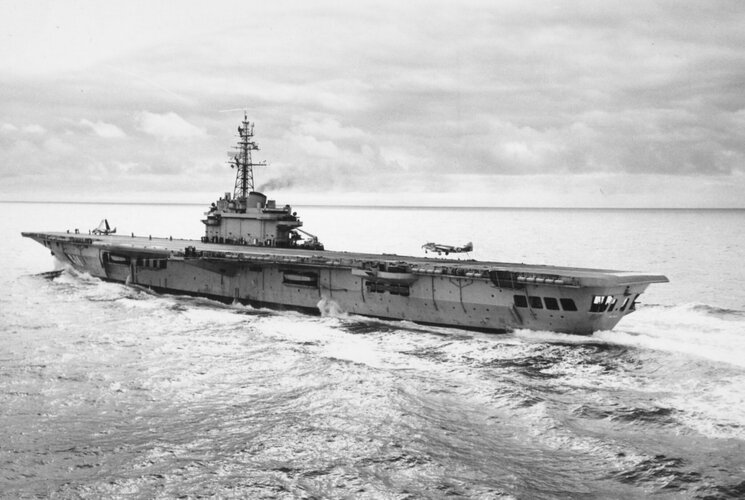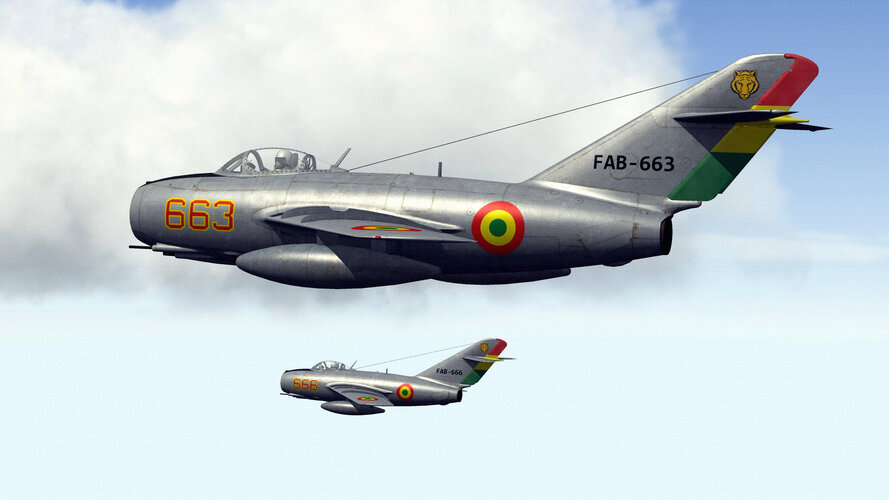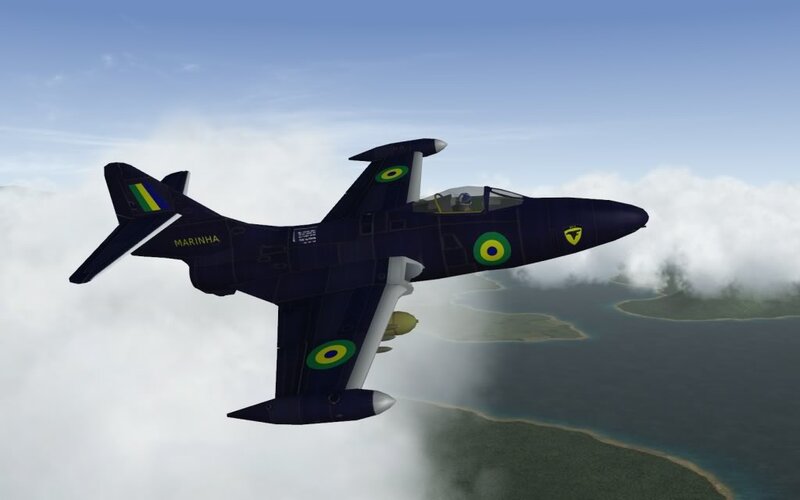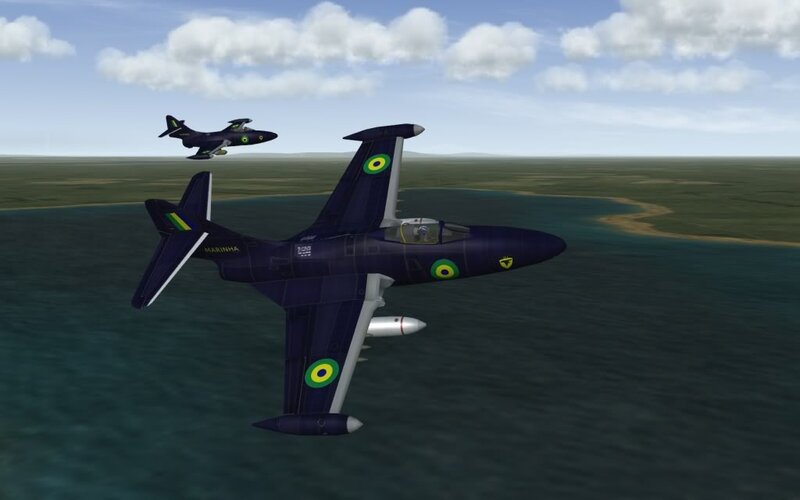Clemenceau implantado na África Ocidental no início de 1963 com Aquilons (16F) e Alizes.
A Aeronavale ainda estava resolvendo os problemas do Etendard. Dito isso, o 15F deveria estar disponível com 16 Etendards entregues no final de 1962 (excluindo 7 protótipos). As entregas de Etendard continuaram em 1963 a uma taxa de 3-4 aeronaves por mês, e o 11F estava quase com força total em abril de 1963, quando seus pilotos completaram 1.000 horas em Etendards.
Não tenho certeza se Arromanches era necessário... veja abaixo.
Foch deveria estar disponível em uma pitada.
Os testes de seu construtor foram concluídos em julho-agosto de 1962, os testes de aviação em setembro de 1962, seguidos por uma reforma pós-testes no inverno de 1962. De fevereiro a abril de 1963, ela esteve em trabalhos operacionais ao largo de Brest, após o que partiu em 11 de junho de 1963 em sua primeira missão curta na costa leste dos Estados Unidos.
PORTE-AVIONS CLASSE CLEMENCEAU (FRANCE) Le porte-avions Clemenceau à la mer. La présence de Crotale indique que la photo est postérieure à octobre 1986 AVANT P

forummarine.forumactif.com
Sidewinder e AS-20 eram os principais mísseis disponíveis em 1963, mas não tenho certeza se os esquadrões ainda tiveram uma chance de dispará-los em treinamento... isso não impediu um programa de treinamento de choque.
AS-30 também potencialmente disponível (mais de 200 entregues no início de 1963 à Força Aérea Francesa para seus Vautors) e era uma arma realmente útil. Ainda não testado em Etendards, mas como era semelhante ao AS-20, seria um bom programa de trabalho para acelerar a adoção.
Alizes também poderiam disparar AS-12s contra alvos de superfície.
Não tenho certeza do que o torna tão categórico.
1) Quais bases aéreas o Brasil tinha ao longo da costa Nordeste e quantos bombardeiros e caças poderiam ser posicionados a partir daí?
2) Qual era o alcance das caças brasileiras? (F-80, Meteor, T-33s)... algum poderia ter alcançado um grupo de porta-aviões 250nm+ offshore?
3) O que impediria os franceses de repetir outro Suez e destruir os antigos bombardeiros no solo? Se os bombardeiros voassem para a força-tarefa, provavelmente voariam devagar e sem escolta, quantos sobreviveriam às defesas de caças e canhões navais?

